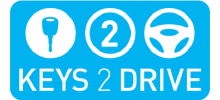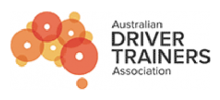Your Questions? Our Answers!
Some of our most frequent questions and answers
We hope some of these questions (together with their answers) have helped you today. If not, please don’t hesitate to contact us directly with your questions, concerns or clarifications.
Keys2Drive... what is this?
Free one hour lesson! Keys2drive is a free lesson which aims to change the way learners drive by changing the way they learn, helping them to becoming a safer P-plate driver.
Who pays? The Australian Government sponsors this free driving lesson, in partnership with the Australian motoring organisations (e.g. RACQ) aims to connect learner licence holders and their parents or partner supervisors with a Keys2drive accredited professional driving instructor.
Why Keys2Drive? Many new drivers believe they are better at driving than they actually are! Keys2drive aims to give them a much more accurate and realistic picture, helping to build a foundation for lifelong safe driving.
What are the benefits? Keys2Drive offers a practical learning approach to learner drivers and their parents or partner supervisors with practical examples of how it can be used when supervising and learning to drive a car. Participants get lots of great advice and information about how to practise and what to aim for over their learning to drive journey.
What is a lesson worth?
As driving instructors, we would argue a driving lesson is possibility one best value and most enduring ‘lessons’ any student will enrol in over their lifetime…. given most of us often don’t continue with chemistry, geography, or a foreign language, etc subjects after school or university.
Instead, I think we can safely predict most students will continue to drive daily, if not weekly or monthly once they have gained their P-Plates for the rest of their lives.
Automatic or Manual?
The global trend in motoring is towards automatic transmission systems with many car manufacturers increasingly dropping manual options or as special orders.
While other trends towards hybrid and electric vehicles will by definition be ‘automatic’ i.e. single speed transmissions combined with advanced vehicle control features: lane control, collision avoidance, etc.
However, the average vehicle age is about 10 years so the move to electric vehicles, etc can be expected to take some time and largely limited, at least initially, to those who can afford new and often premium vehicles. So, for the foreseeable future many ‘safe and serviceable’ manual transmission vehicles for continue to be available for students to own and drive.
Learning to drive manual transmission provides students with more of a challenge (at least initially) while delivering greater engagement with their vehicle (i.e. matching gear selection to traffic flow) and encourages higher order skills in reading, interpreting, and responding to road and traffic conditions around them.
Should parents do all the instruction themselves?
Many parents drive everyday to work, etc but often lack the detailed knowledge of the road rules and the driver training experience of a qualified instructor nor the ‘Plan B’ that comes from having a dual control vehicle.
Just do a few lessons before the test?
Unlearning bad habits requires a much greater effort than establishing good habits in the beginning. Therefore ‘quickly’ learning about your test area and the test manoeuvres, etc often allows little time to correct other bad habits.
Passing the practical driving test is the simple part!
Immediately after passing the practical driving test a P-Plater is 20-30 times more likely to be involved in accident. Therefore every P-Plater needs (independent of the practical test) to acquire solid core driving skills and good independent decision-making for a safe transition into a solo driver.
Road Statistics... death and injury?
Serious road safety initiatives first commenced in the 1970’s and since then Australia’s road fatalities have been declining based upon compulsory seatbelts, reducing breath alcohol limit, random breath testing, mandatory bicycle helmets, speed enforcement and improvements to road safety.
Perhaps a more sobering aspect of the improvements in reducing road deaths is the inverse trend in serious road injury and hospitalisation. To highlight this in calendar year 2018 Queensland road deaths killed 247 people while another 6,750 people were hospitalised with the estimated costs to the community of $1.88 billion and $3.61 billion respectively.
Despite spending millions of dollars on road safety messages the following continue to persist as the ‘fatal five’ driving fatigued*, drunk or drug -driving, not wearing a seatbelt*, speeding and driving distracted either as single key elements or in combination for most fatalities and serious injuries on Queensland roads.
Note: Amazingly 1 in 4 people killed on Queensland roads were identified as not wearing a seatbelt while fatigue was identified as another key factor in 13% of road deaths.
Wildlife... ?
Animal collisions account for around 5% of total fatal car accidents in Australia and perhaps unsurprisingly, kangaroo and wallaby collisions make up 90% of all those animal collisions.
To quantify this in Queensland in the five years (2001 – 2005) under the reporting categories: hit animal, animal uncontrolled on road generated some 3,197 incidents which can be broken into the following results: fatal crash 19 (0.5%), hospitalisation crash 649 (20.3%), minor injury crash 981(30.7%), and property damage crash 1,551 (48.5%).
Some very useful learnings from these events and how to reduce your chances of animal collisions with kangaroos and wallabies include:
- kangaroo car accidents are most likely to occur between 5:00pm and 10:00pm
- the risk of crashes are higher in winter
- more collisions occur following long periods of dry weather







